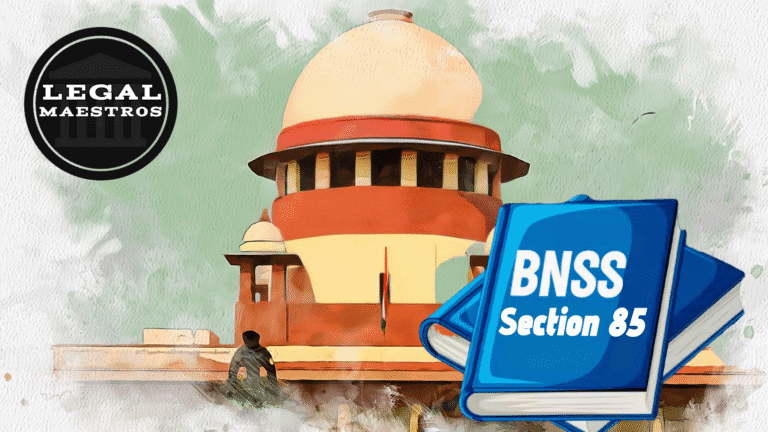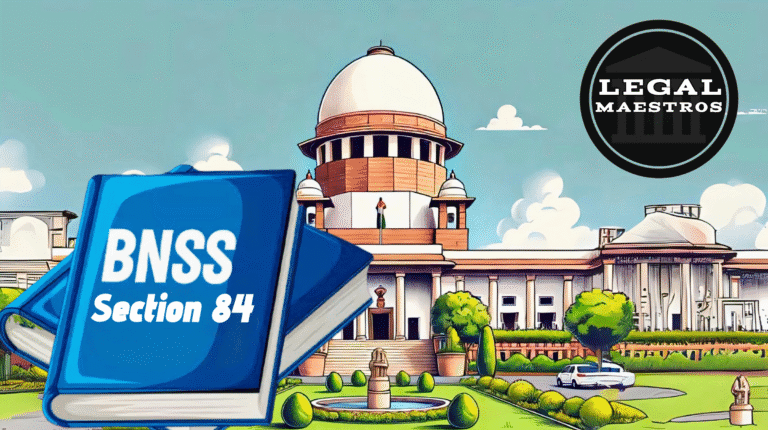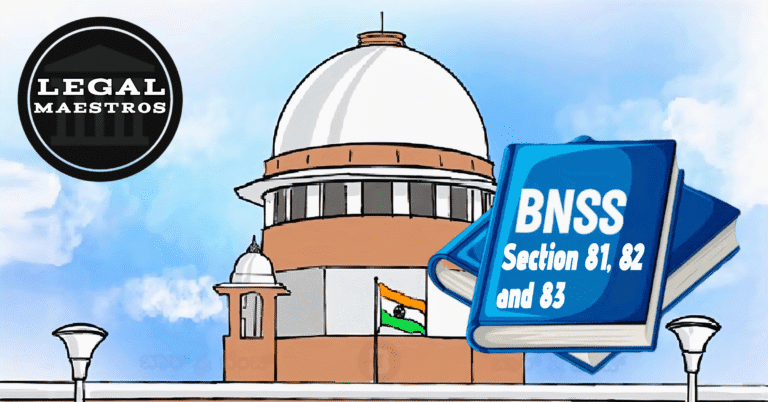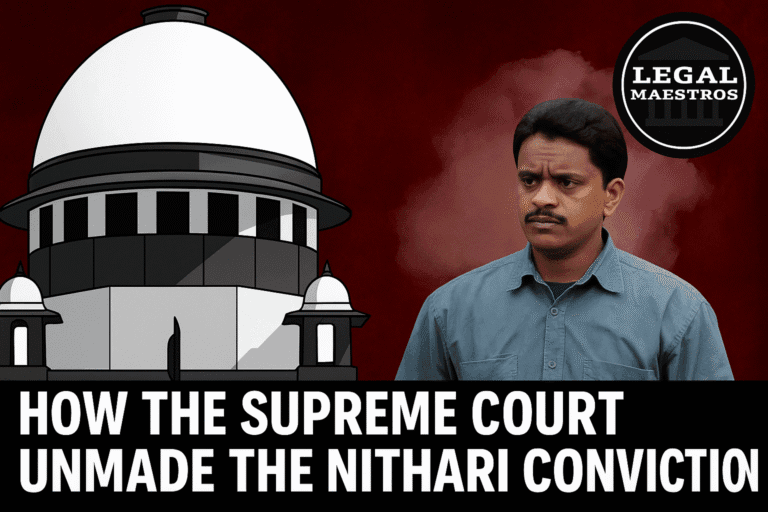
Sections 57: Person arrested to be taken before Magistrate or officer in charge of police station.
When a law enforcement officer makes an arrest without a warrant, there are certain regulations that they are required to adhere to in order to safeguard the rights of the person who is being detained and to guarantee that the legal process is carried out correctly. Following the provisions of Section 57 of the Bharatiya Nagarik Suraksha Sanhita, 2023, the law enforcement official is obligated to ensure that the individual who has been detained is brought before the appropriate authorities without any unnecessary delay.
As soon as a person is detained without a warrant, the law makes it quite plain that the police officer is obligated to immediately transport or convey that individual to a Judicial Magistrate who has jurisdiction over the case. This is the Magistrate who has the authority to lawfully hear the case and make a decision about it. In the event that it is not possible to get in touch with a Magistrate right away, the individual in question ought to be brought before the officer who is in charge of the police station.
By adhering to this regulation, the individual who has been arrested will be placed under lawful control as fast as possible. It precludes the police from keeping the individual without any means of supervision for an indeterminate period of time. The presence of a Magistrate or senior police officer serves as a safeguard, providing an opportunity to investigate whether or not the arrest was legitimate and to determine the reason for the person’s detention.
For any queries or to publish an article or post or advertisement on our platform, do call at +91 6377460764 or email us at contact@legalmaestros.com.
Consider the scenario in which a law enforcement officer in a small town makes an arrest of a person who is suspected of stealing. In accordance with Section 57, the officer is obligated to bring this individual before the local Magistrate or the senior official of the police station without wasting any time. Following that, the Magistrate will make a decision regarding whether the individual should be released, released on bail, or continued to be held.
Section 58: Time Limit on Detention Without Warrant
There is a stringent limit on the amount of time that a person can be held in police custody without a warrant, as stipulated by Section 58 of the Bharatiya Nagarik Suraksha Sanhita, 2023 regulations. This clause ensures that the individual who has been arrested is not held by a law enforcement official for more than twenty-four hours.
This time restriction does not include the time spent driving from the location of the arrest to the Magistrate’s court; therefore, the clock begins ticking immediately the individual who was arrested arrives at the police station or is taken into custody when they are arrested. One of the primary goals of this regulation is to avoid unlawful or extended detention without the appropriate approval from the judicial system.
For any queries or to publish an article or post or advertisement on our platform, do call at +91 6377460764 or email us at contact@legalmaestros.com.
Despite the fact that the law acknowledges the possibility that there may be exceptional circumstances on occasion, any detention that lasts for more than twenty-four hours must be authorized by a Magistrate in accordance with a specific order (outlined in section 187). Holding someone for more than twenty-four hours is against the law if you do not have this particular approval.
As an illustration, let’s say that a person is taken into custody late at night. It is the responsibility of the police to make certain that the individual is brought before the Magistrate within twenty-four hours of the time that they were arrested. It will be a breach of the law if the police are unable to contact the Magistrate or if they hold the person out of their custody for more than twenty-four hours without a specific order from the Magistrate.
The right to freedom of the individual who has been arrested is protected by this section, which also forbids the abuse of police power. In addition to this, it motivates law enforcement to respond quickly and adhere to the appropriate protocol when dealing with arrests.
For any queries or to publish an article or post or advertisement on our platform, do call at +91 6377460764 or email us at contact@legalmaestros.com.
Section 59: Duty of Police to Report Arrests
Additionally, Section 59 places an emphasis on the obligation that police officers who are in control of police stations have to ensure that their arrests are conducted in a transparent and accountable manner.
It is the responsibility of the official in charge of a police station to report the arrest of any individual who is taken into custody without a warrant within the confines of the station to the District Magistrate. Additionally, the report may be delivered to the Sub-divisional Magistrate if the District Magistrate gives the order to do so.
Whether the person who was arrested is released on bond or is held in custody, this reporting is required regardless of the outcome. It has the effect of ensuring that higher authorities are kept informed about the activities taken by the police and are able to monitor the process.
For any queries or to publish an article or post or advertisement on our platform, do call at +91 6377460764 or email us at contact@legalmaestros.com.
This law is significant because it establishes a check on the authority of the police, so ensuring that arrests are accurately recorded and monitored by the administrative officers or the judicial system. Abuse of authority and unlawful arrests are both reduced as a result of this.
An example of this would be the officer in charge of a police station in a district making arrests of multiple individuals during a festival for a variety of different complaints. In accordance with Section 59, the officer is required to submit a report to the District Magistrate documenting each and every arrest. This gives the Magistrate the opportunity to take a look at the cases and make certain that the arrests are lawful and warranted.
Examples of Real-World Applications to Help You Understand These Sections
Take for example a scenario in which a person named Ravi is accused of stealing a cell phone. Ravi is taken into custody without a warrant by a law enforcement officer late in the evening. In accordance with Section 57, the officer is obligated to bring Ravi before the Magistrate or the officer in charge of the police station without any undue delay. Ravi cannot be held captive in any other location without being supervised.
For any queries or to publish an article or post or advertisement on our platform, do call at +91 6377460764 or email us at contact@legalmaestros.com.
It is now time for Section 58 to take effect. Ravi must be brought before the Magistrate within the span of twenty-four hours, excluding travel time, according to the police. Ravi must be freed if the police are unable to do this, unless there is a specific order from a Magistrate that allows for longer detention beyond what is currently being considered. Ravi is shielded from being held against his will as a result of this.
In conclusion, Section 59 mandates that the official at the police station must give notice of Ravi’s arrest to the District Magistrate, regardless of whether or not Ravi is released on bond. This not only guarantees that the police are acting within the law, but it also keeps the Magistrate informed.
The Significance of These Sections for Both the Police and the Citizens
Together, these three sections provide an essential component of the legal framework that safeguards the rights of those who have been arrested while also providing guidance to law enforcement authorities regarding appropriate behavior.
For any queries or to publish an article or post or advertisement on our platform, do call at +91 6377460764 or email us at contact@legalmaestros.com.
These regulations offer residents protection against arbitrary arrest and wrongful detention, which are both violations of the law. They make sure that anyone who is detained without a warrant is taken before a legal authority as soon as possible and that they are not imprisoned for extended periods of time without any supervision.
The guidelines that are provided in these parts are crystal obvious for law enforcement agents to follow while making arrests without a warrant. They underline how important it is to respond quickly, the need of maintaining legal time restrictions, and the importance of keeping top authorities informed.
This type of legal protection helps to develop trust between the general people and the agencies that are responsible for law enforcement in a democratic society. When law enforcement officers adhere to these guidelines, it fosters a culture of justice, fairness, and respect for human rights.
For any queries or to publish an article or post or advertisement on our platform, do call at +91 6377460764 or email us at contact@legalmaestros.com.






![Research Assistantship @ Sahibnoor Singh Sindhu, [Remote; Stipend of Rs. 7.5k; Dec 2025 & Jan 2026]: Apply by Nov 14, 2025!](https://legalmaestros.com/wp-content/uploads/2025/11/Gemini_Generated_Image_s0k4u6s0k4u6s0k4-768x707.png)
![Karanjawala & Co Hiring Freshers for Legal Counsel [Immediate Joining; Full Time Position in Delhi]: Apply Now!](https://legalmaestros.com/wp-content/uploads/2025/11/Gemini_Generated_Image_52f8mg52f8mg52f8-768x711.png)